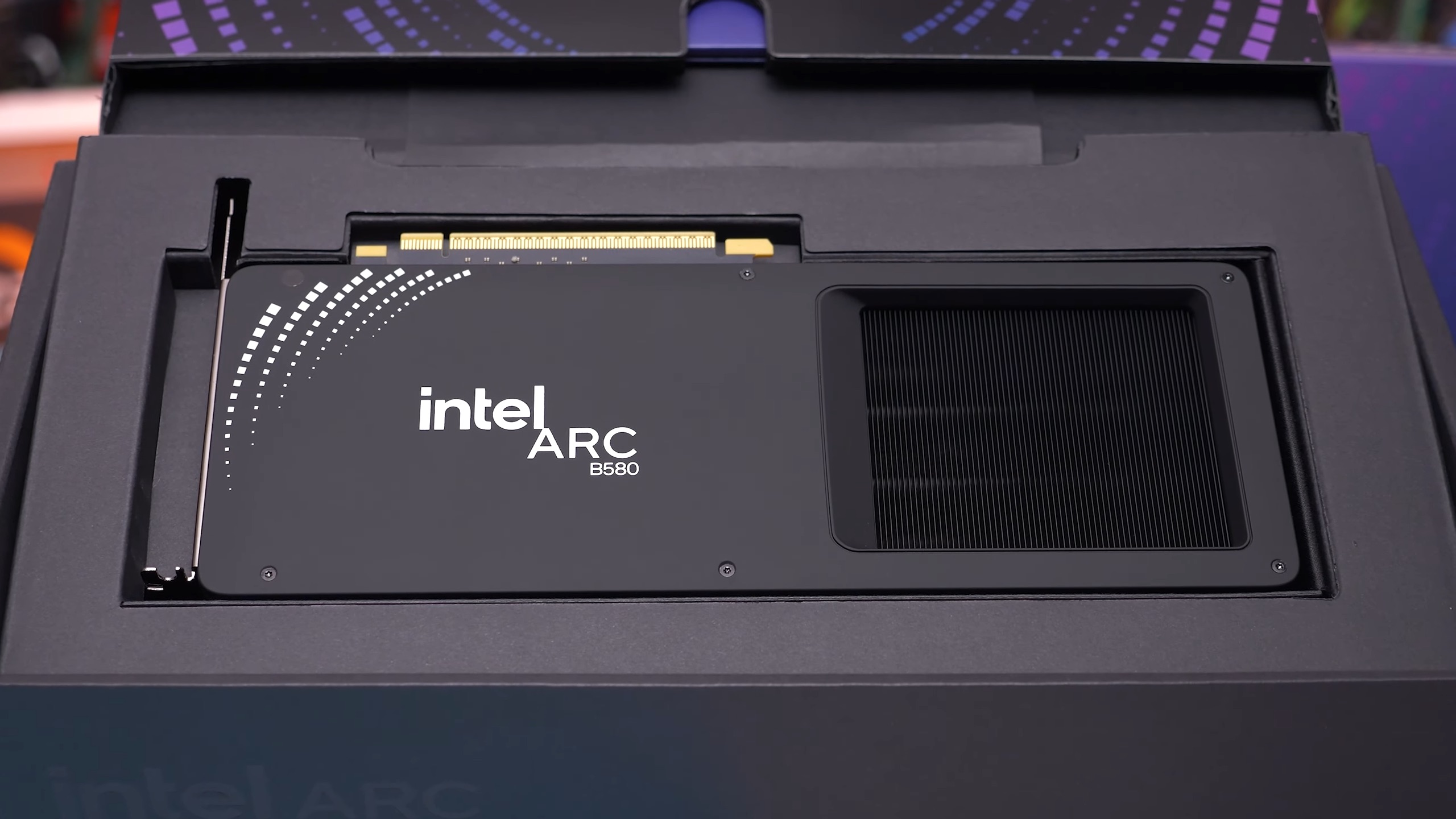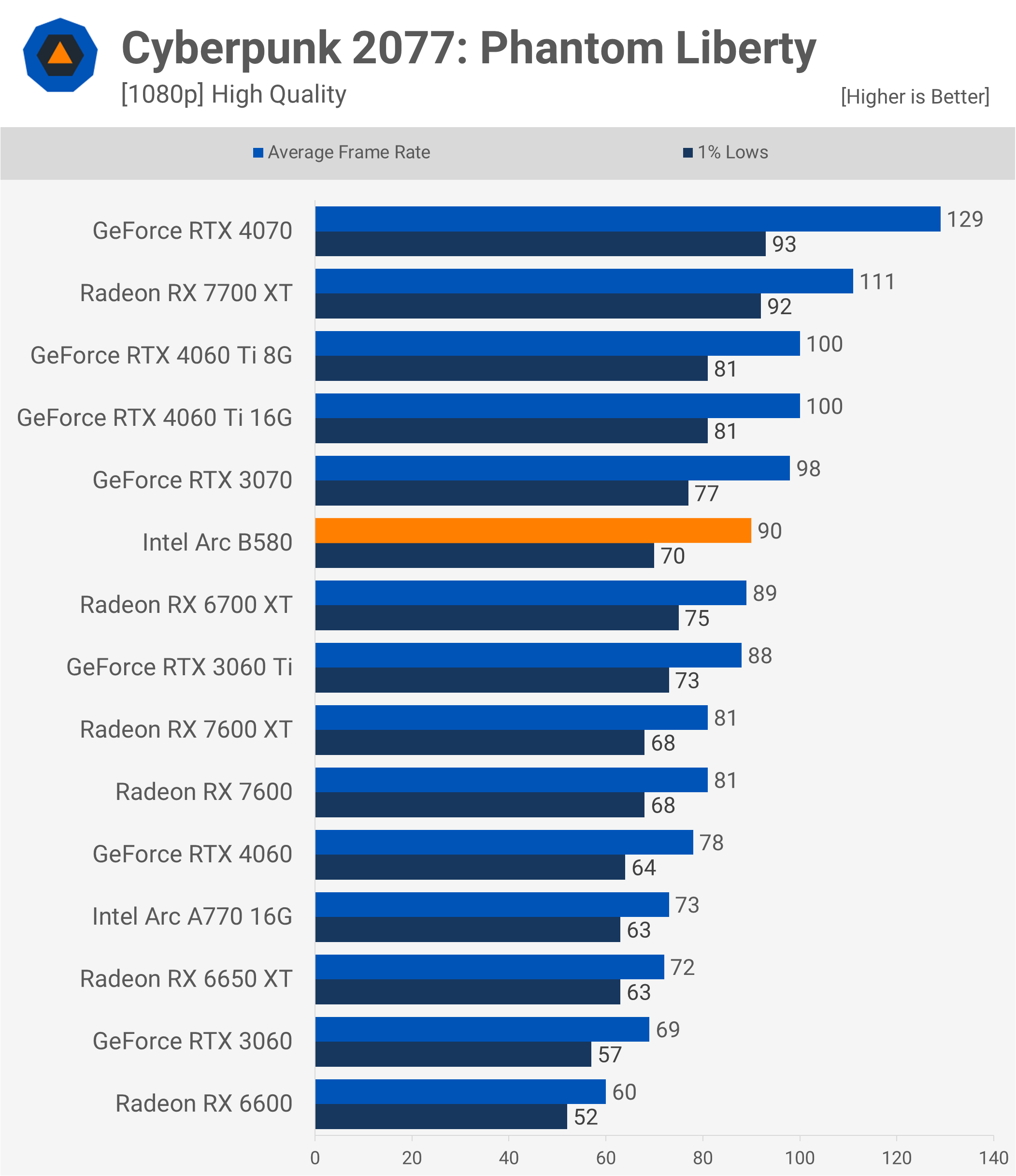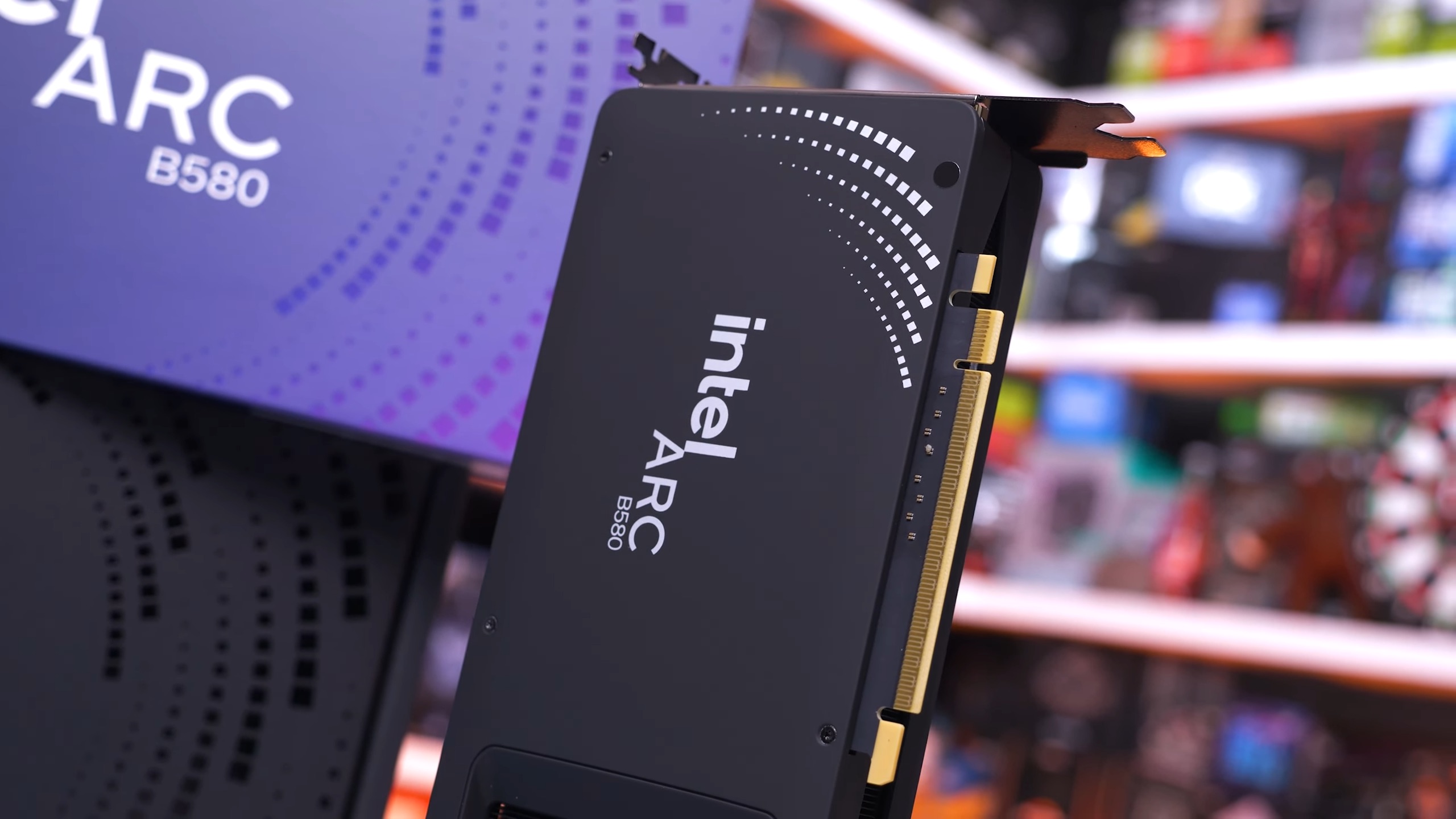Intel Arc B580 Review: Best Value GPU
Today marks a special day for PC gamers with the return of the $250 graphics card, and what we are seeing from Intel looks very promising. That’s right – Intel appears to be revitalizing PC gaming by delivering a GPU that outperforms both the GeForce RTX 4060 and Radeon RX 7600 while costing less and, importantly, offering more VRAM: 12GB instead of just 8GB.
This new graphics card is called the Arc B580. It is based on the new Xe2 architecture and is designed for 1440p gaming. Key features of the Xe2 architecture include the 2nd-gen Xe core with SIMD16 execution, which provides significant efficiency improvements; a new and enhanced ray tracing hardware unit with double the throughput, and 2nd-gen XMX engines.
In terms of specifications, the B580 is manufactured using TSMC’s N5 process, packing 19.6 billion transistors into a 272mm² die. It includes 20 Xe cores, 160 Xe Vector Engines, 160 XMX Matrix Engines, 20 RT units, 160 TMUs, and 80 ROPs.
Intel Arc Specs
| Intel Arc B570 | Intel Arc B580 | Intel Arc A580 | Intel Arc A770 | ||
|---|---|---|---|---|---|
| Price (MSRP) | $220 | $250 | $180 | $330/$350 | |
| Release Date | Jan 16, 2025 | Dec 12, 2024 | Oct 10, 2023 | Oct 14, 2023 | |
| Process | TSMC N5 | TSMC N6 | |||
| Transistors (billion) | 19.6 | 21.7 | |||
| Die Size (mm2) | 272 mm2 | 406 mm2 | |||
| Core Config | 18 Xe2 | 20 Xe2 | 24 Xe | 32 Xe | |
| GPU Boost Clock | 2750 MHz | 2850 MHz | 1700 MHz | 2400 MHz | |
| Memory Capacity | 10 GB | 12 GB | 8 GB | 8 / 16 GB | |
| Memory Speed | 19 Gbps | 16 Gbps | 16 / 17.5 Gbps | ||
| Memory Type | GDDR6 | ||||
| Bus Type / Bandwidth | 160-bit | 192-bit | 256-bit | ||
| Total Board Power | 150W | 190W | 175W | 225W | |
The cores are clocked at 2,670 MHz but can boost up to 2,850 MHz. The memory system features 12GB of GDDR6 memory running at 19 Gbps, and with a 192-bit wide memory bus, it delivers 456 GB/s of memory bandwidth. The board power rating is set at 190 watts, and it uses a PCIe 4.0 x8 interface.
On hands for testing, we have the Intel Arc B580 Limited Edition, along with a few AIB models. However, the AIB models are under embargo for another 24 hours. The Limited Edition model features Intel’s signature stealth black design in a dual-fan configuration. The PCB is compact, allowing the second fan to provide additional airflow through the card.
Cyberpunk 2077: Phantom Liberty
For Cyberpunk 2077: Phantom Liberty, we tested the “high preset” with upscaling disabled, rendering at a native 1080p resolution. Under these conditions, the B580 achieves 90 fps, providing an 11% improvement over the 7600 and a 15% boost over the 4060. It performs on par with the 6700 XT and 3060 Ti.
At 1440p, the B580 performs even better relative to competing GPUs, coming close to the 4060 Ti with an average of 63 fps. This puts it 19% ahead of the 7600 and a significant 29% faster than the 4060. It’s worth noting that we tested in-game performance rather than using the built-in benchmark for Cyberpunk 2077.
Cooling Performance
Before moving on, let’s quickly examine how the Intel Arc B580 Limited Edition graphics card performs under load. Testing was conducted inside an enclosed ATX case with a room temperature of 21°C.
Under these conditions, the B580’s GPU peaked at just 62°C, with a maximum memory temperature of 70°C. The cores operated at 2,850 MHz, and the fan speed typically ranged between 1,250 and 1,350 RPM. Overall, the card ran very cool and quiet under load.
Ray Tracing Performance
For testing ray tracing performance we have six games, all of which have been carefully selected. We spent months testing the effectiveness of RT effects in a broad range of titles and found games such as Metro Exodus Enhanced, Alan Wake II, Cyberpunk 2077: Phantom Liberty, Marvel’s Spider-Man Remastered, Black Myth: Wukong and Dying Light 2 Stay Human were among the best to showcase the technology, offering what we called “better overall” to “transformative visuals.”
Ray Tracing Performance Summary
Looking at the ray tracing average at 1080p for these six titles, the Arc B580 was 20% slower than the RTX 4060, but 55% faster than the RX 7600. However, some results need to be taken with caution. For instance, in titles like Alan Wake II and Black Myth: Wukong, the RTX 4060 was effectively unusable, even at 1080p.
At 1440p, the B580 was 18% slower than the RTX 4060. However, in games such as Alan Wake II, Cyberpunk 2077, Dying Light 2, and Black Myth: Wukong, the RTX 4060 struggled to maintain playable frame rates even with quality DLSS enabled, resulting in a subpar experience.
Cost per Frame – MSRP
Now it’s time to analyze the all-important cost per frame, and this is where the Arc B580 truly stands out, thanks to its $250 MSRP. Based on the 1440p data, the B580 delivers a 24% cost-per-frame advantage compared to the RX 7600 and a 27% advantage over the RTX 4060.
Before the B580’s release, we noted that if Intel could achieve a 20% cost-per-frame discount relative to the RTX 4060, it would be a success. Given that we’re seeing over a 20% discount here, the B580 appears to be well-positioned for success. However, let’s also examine real-world retail pricing.
Cost per Frame – Typical Retail Price
Even at current retail prices, the B580 remains a strong value. It offers a 21% lower cost per frame than the RX 7600, while maintaining the same 27% discount relative to the RTX 4060. For anyone purchasing an Arc B580 graphics card at launch, this represents an excellent deal.
It’s fair to say that the Arc B580 is a great-value graphics card, at least in the current market. The cost-per-frame data clearly shows it offers at least 20% better value than competing products, and some of this analysis doesn’t even factor you’re getting 50% more VRAM.
Measuring the value of that additional VRAM can be difficult, as short benchmark runs often fail to reveal limitations when VRAM capacity is just at or slightly beyond its threshold. These benchmarks also don’t account for scenarios where games reduce texture quality automatically – cases in which performance can actually improve on models with insufficient VRAM.
Also see: How Much VRAM is Enough for PC Gaming?
But what we can tell you that going from 8GB to 12GB of VRAM is invaluable. This will make the B580 a significantly more capable product than either the RX 7600 or RTX 4060 moving forward. Factoring this into the equation, the B580 stands out as an excellent value, outperforming anything AMD or Nvidia currently offer in this price range.
In terms of stability, the B580 performed well during testing – though not flawlessly. Nevertheless, it is sufficiently stable for its price point. Intel has made substantial improvements to stability and compatibility over the years, and even during the review process, most of the issues we encountered were resolved before the embargo lifted. That said, users are more likely to encounter occasional issues with the B580 compared to the Radeon 7600 or RTX 4060, which is why we feel the 20% discount is justified – and Intel has delivered on that promise.
Power consumption isn’t a major concern either. While using approximately 50 watts more than the RTX 4060 isn’t ideal, it’s far from a dealbreaker, especially given the significant price discount here.
Likewise, we aren’t overly concerned with ray tracing performance. Intel claims the B580 outperforms the RTX 4060 in ray tracing for titles that don’t heavily rely on RT effects, which is true for the majority of games. However, in titles where ray tracing is transformative to visuals, the RTX 4060 tends to perform better. But… given the lackluster ray tracing performance of GPUs under $600, ray tracing is not be a priority for this price segment.
As it stands, if you’re in the market for a graphics card under $300, your options are very limited. For a long time, the Radeon RX 6600 has been the go-to choice. However, with an average of just 34 fps at 1440p in our 12-game sample, the RX 6600 is almost 70% slower than the B580, making the B580’s roughly 30% higher price, along with 50% more VRAM, an easy investment to justify.
For gamers aiming for 1440p, the Radeon 6600 requires medium-to-low quality settings. With the arrival of the Intel Arc B580, AMD may need to price the RX 6600 at around $130. Similarly, the RX 7600 must drop to $200 to compete effectively, though even that won’t be very compelling given its 8GB VRAM. A more competitive price for the RX 7600 would be around $180, forcing AMD to slash prices by at least 30%.
The RTX 4060, currently priced at $300, would also need to fall to $200 at most – but that seems highly unlikely. As a result, the B580 has firmly established itself as the best option for entry-level gaming. It’s hard to recommend anything else. Intel has done an excellent job, achieving with their second generation what they couldn’t with their first.
Source : By (https://www.techspot.com/)












